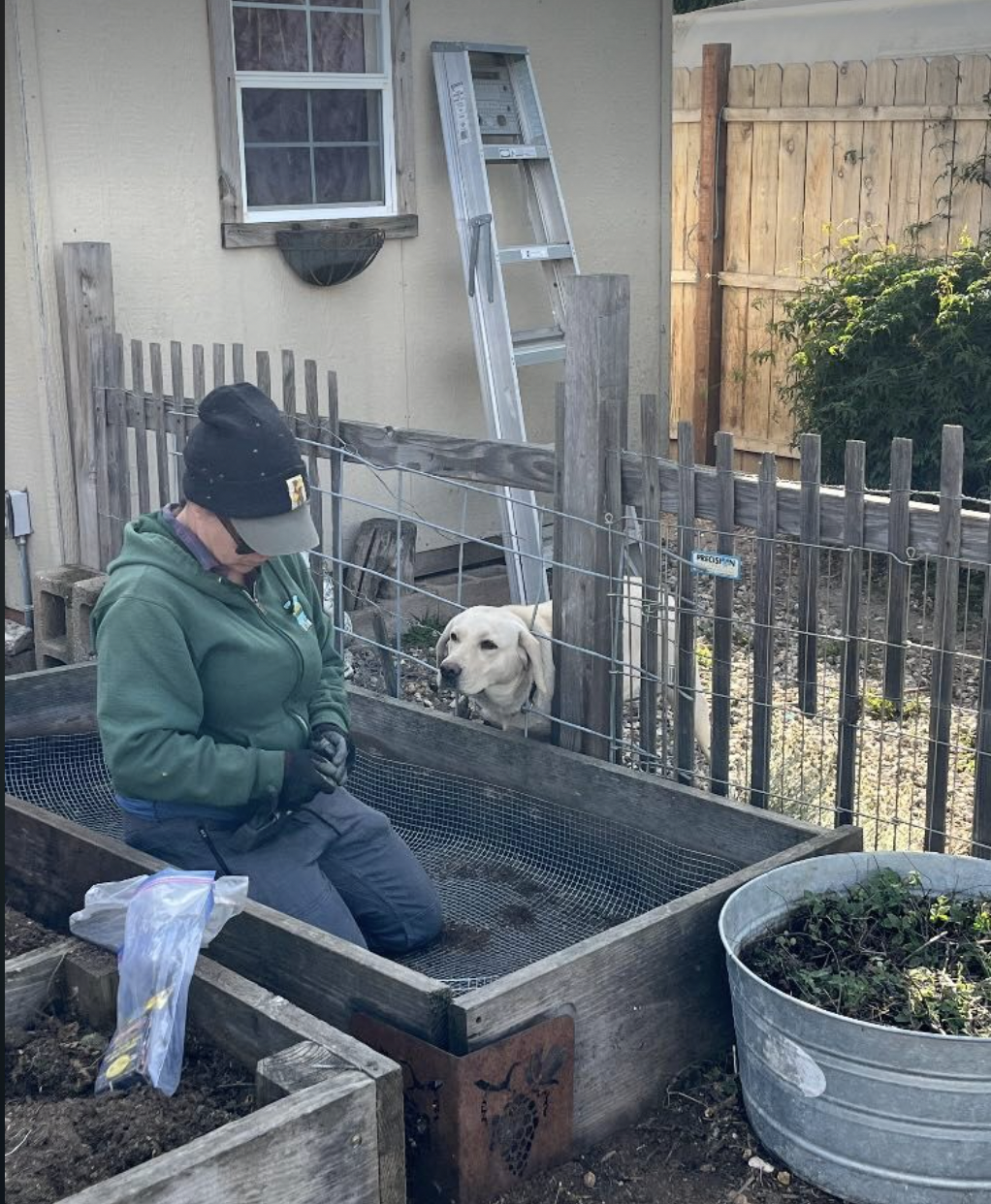Making Connections Through Gardening
In the late spring, we asked the community if anyone had a garden that could be part of our Deviled Eggery Food Security Garden Network, a new partnership with Una Vida. Most of the gardeners who contacted us wanted to offer their expertise, extra garden produce, or volunteer labor, but one response was different. Dawn Silva already had plenty of garden space and she wanted to grow food to donate to Una Vida’s Tuesday Market, but her disabilities prevented her from getting started. We connected Dawn to some eager, knowledgeable volunteers willing to help.
Dawn said, “I believe my love of gardening came from my Grandmother and my Mom. I have been struggling with health issues that began in 2017 when I fell and broke my right wrist, which led to Chronic Regional Pain Syndrome (CRPS). In 2020 I injured my right knee, which resulted in a several surgeries, and I subsequently injured my left knee in 2021, overcompensating for my right knee. Having injuries to my right upper extremity and bilateral knees makes gardening very difficult. I’ve always loved gardening and have had many beautiful gardens in the past, so I’m excited to have the much needed help to finally get a productive garden and give back to those in the community that would like fresh produce.”
Two members of the Deviled Eggery Garden Network, Lamar Shahbazian (a recent retiree and home gardener) and Elizabeth Sanders (a professional urban farmer) worked with Dawn to get a raised bed in her backyard ready for planting. The existing bed was well-built, and had been used in the past, but Dawn’s physical limitations and burrowing rodents made the bed less productive than it could be. The raised bed contained soil, but it needed to be removed and the bed underwired to prevent burrowing rodents from killing the plants and eating the produce.
Using supplies donated by Lamar and Elizabeth, the three of them removed the soil and then painstakingly cut and fit the hardware cloth used to underwire the beds and stapled it in place, being sure to run it up the sides of the raised bed to prevent future wood decay from allowing the rodents to push through and regain access. The soil was then replaced and amended with an organic fertilizer to encourage beneficial microbial activity. More soil was added, and a drip irrigation system was installed. The same process was repeated in the next two beds.
Here’s some advice for a project like this one:
Don’t try to use one piece of hardware cloth to cover both the ends and the bottom/sides of the bed,;in this narrow of a bed it’s best to have separate pieces for the ends.
The hardware cloth was 48” wide, slightly too wide to cover the long sides and bottom of the bed. We had to fold/cut the length of the hardware cloth, and learned that we should have done that on the back of the bed vs. the front of the bed (to avoid sharp edges or having to reach over a piece of wire that was slightly too high).
U-shaped fasteners used for irrigation work great for hardware cloth!
After the hard work was finished, Dawn was able to plant the garlic starts and pea seeds the very next day! Now she can continue to care for the vegetables planted in this bed, and will be donating produce to Una Vida once they are ready for harvest.
Lucky for us, Lamar has a lot of experience and she often writes about what she’s learning. To dive deeper into her lessons, read her blog! We appreciate all of the volunteers in our Network and we will continue to make useful connections in any way we can. Reach out to us if you’d like to be part of this!


